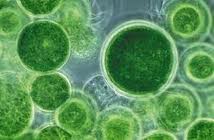What makes algae such an attractive alternative to other bio-fuel sources?
- There are lots of it around.
- We can grow it in wastewater.
- We can grow it in brackish and saltwater.
- We can grow it where nothing else can be grown.
- We can use it to sequester CO2 during its growth, something we cannot do with fossil-fuel derived energy sources.
Scientists at Virginia Tech‘s Virginia Bioinformatics Institute have assembled the genome of Nannochloropis gaditana, a marine algae that they believe with genetic modification could produce bio-fuel on an industrial scale.
In the article, Draft Genome Sequence and Genetic Transformation of the Oleaginous Alga Nannochloropis gaditana the researchers describe their work in sequencing the genome for a marine algae that can produce high lipid yields in its natural state and that with a little genetic manipulation can become even more promising in lipid bio-synthesis.
In mapping the genome of N. gaditana the researchers identified 9,052 gene models and analyzed and identified genetic attributes for enhanced lipid bio-synthesis. N. gaditana has been studied for its nutritional value and its ability to produce chemical compounds such as pigments like zeaxanthin and astaxanthin, and polyunsaturated fatty acids. Commercial exploitation however has been limited in the past by low growth rates and small cell size. With genetic modification N. gaditana’s limitations can be overcome and a new source of bio-fuel may soon emerge.









